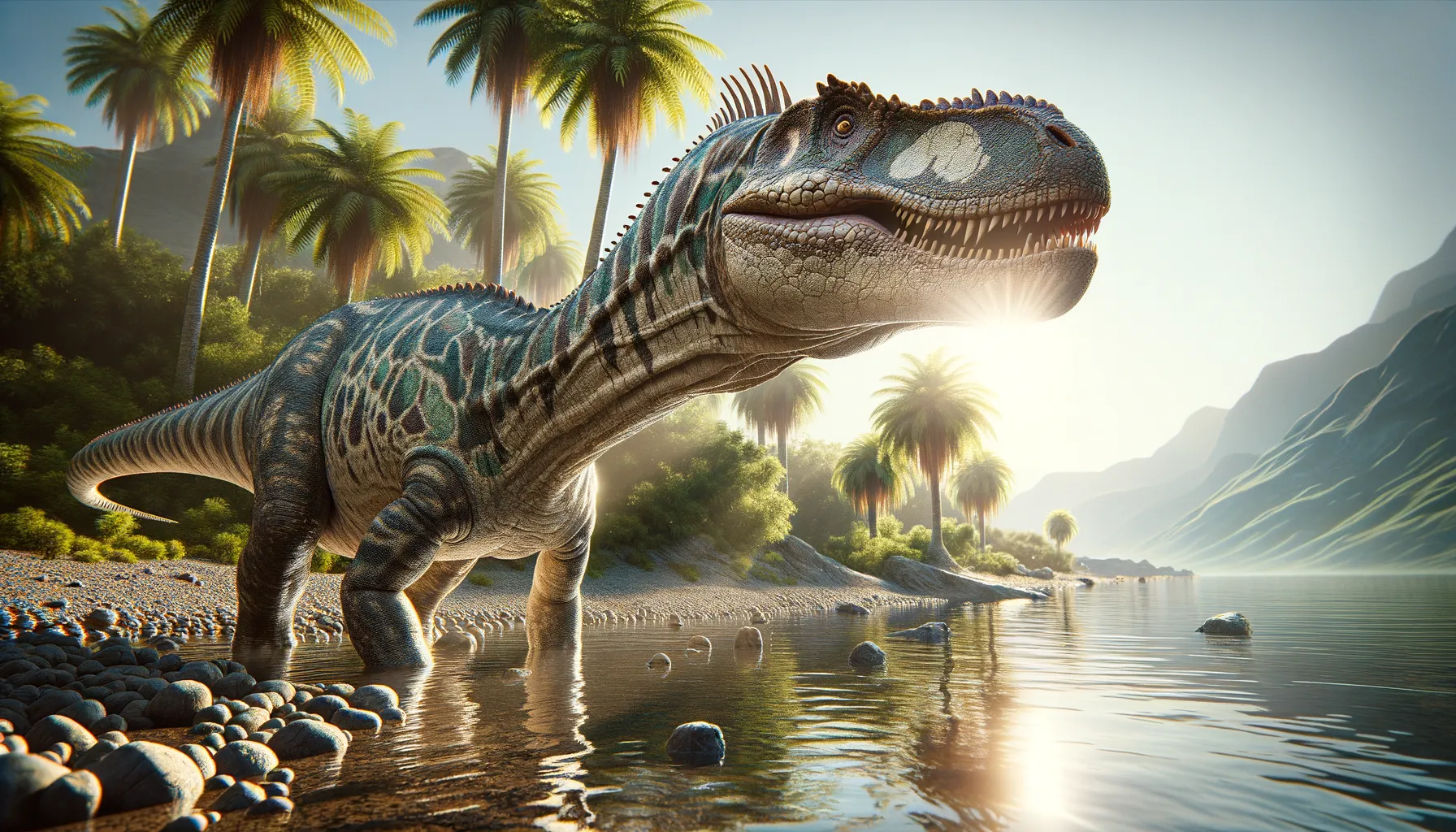
Doratodon
A nimble survivor of ancient waters.
Period
Cretaceous
Length
Approximately 6 to 8 feet long.
Height
About 2 to 3 feet tall.
Weight
Moderate weight, about a few hundred pounds.
Doratodon, a small crocodyliform, inhabited the Cretaceous period around 100 million years ago. Its fossils have been discovered in parts of Europe, providing valuable insights into prehistoric ecosystems. Although not as famous as some dinosaur counterparts, its streamlined body suggests a life well-adapted to land and water. The physical traits and fossil evidence reveal a creature that thrived in a diverse and dynamic environment.
Diet
Doratodon likely had a varied diet, consisting of fish and small vertebrates. Its sharp teeth indicate a preference for flesh, making it a skilled hunter in its environment.
Hunting
Its hunting behavior might have involved swift ambush tactics, relying on speed and agility to capture prey. Doratodon's compact size and powerful jaws made it an effective predator in its era.
Environmental challenges
Doratodon faced numerous environmental challenges, including competition for resources with larger predators. Climate variations in the Cretaceous period required adaptability to survive in changing waters. Additionally, its relatively small size may have exposed Doratodon to predation from larger creatures, necessitating stealth and agility.
Speed
Likely quick and agile for its size.
Lifespan
Estimated Jurassic lifespan of several decades.
First discovery
Discovered in Austria during the late 1800s.
Fun Facts
- Doratodon lived during the Late Cretaceous period, over 70 million years ago.
- Fossils of Doratodon have primarily been found in Europe.
- Unlike many famous dinosaurs, Doratodon was a crocodyliform, a group related to modern crocodiles.
- Doratodon had a long, slender body which suggests it was well-suited for swimming.
- Its sharp teeth indicate that Doratodon likely had a carnivorous diet, possibly feeding on fish or small animals.
- Doratodon's name means 'lance tooth,' referring to its pointed teeth.
- Though not as large as some of its dinosaur contemporaries, Doratodon played a vital role in its ecosystem as a predator.
Growth and Development
As it grew, Doratodon would have undergone changes in body proportion, allowing for more efficient movement in water and on land. Initially starting as a juvenile with more vulnerable features, survival in its environment led to rapid development of its hunting skills. Reaching adulthood likely provided a greater range of prey availability and predator evasion tactics.
Habitat
Doratodon thrived in semi-aquatic environments, favoring riverbanks and coastal areas. Its habitat would have included lush vegetation, providing cover and hunting grounds. The presence of water bodies not only permitted feeding opportunities but also offered a refuge from larger land-based predators.
Interaction with other species
Doratodon would have shared its habitat with a variety of other species, possibly forming symbiotic relationships with some herbivorous dinosaurs. Its interactions might include both competition and cooperation for food sources. Fossil evidence also suggests its coexistence with similar sized predators, indicating a complex ecosystem.
Natural lifespan
Its natural lifespan likely extended to several decades.
Reproduction
Little is known about its reproduction, but like modern crocodylians, Doratodon probably laid eggs. Nesting in secure places away from predators would have been crucial for survival. Hatchlings may have required parental protection during the early stages of growth.
Social behaviour
While definitive social structures are hard to confirm, Doratodon might have exhibited solitary hunting behavior. It is possible that young dinosaurs had social interactions for safety and learning. Social behavior during the mating season or in juvenile stages could have been more prominent.
Fossil locations
Doratodon's fossils have predominantly been found in Central Europe, with significant discoveries in Austria and Hungary. These areas provided an ideal environment for preservation, unveiling much of what is known about this species. The fossil record has offered insights into its lifestyle and adaptation strategies over millions of years.
